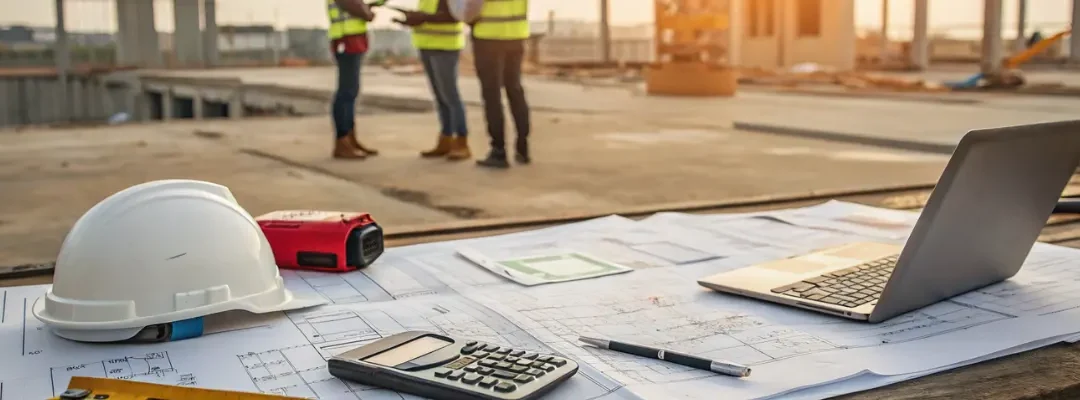Before the first shovel hits the ground, a successful construction project begins with thorough planning. Whether you’re building a home, commercial complex, or infrastructure project, overlooking key planning essentials can lead to cost overruns, delays, design issues, and legal complications.
This guide walks you through the critical factors to consider when planning a construction project—so you can lay the foundation for success.
1. Define Project Scope Clearly
A well-defined project scope sets expectations, controls costs, and avoids confusion later.
Key Steps:
- Identify project goals, deliverables, and milestones
- Create a project brief with timelines, budget, and requirements
- Set clear roles for stakeholders (owner, contractor, consultants)
2. Finalize Site Selection and Soil Testing
The project site determines many design and foundation choices. Before committing, evaluate the land properly.
Must-Do Actions:
- Conduct a geotechnical (soil) investigation
- Check zoning laws, setbacks, FSI (Floor Space Index)
- Assess flood risk, access roads, and utilities
3. Set a Realistic Budget
An unrealistic or poorly tracked budget can stall construction mid-way.
Tips:
- Include construction + soft costs (design, legal, permits, etc.)
- Set aside a contingency buffer (5–15% of total budget)
- Track expenses with project budgeting software
4. Get Necessary Permits & Approvals
Skipping approvals can halt work and lead to legal trouble.
Typical Requirements:
- Municipal building permit
- Environmental clearance (if applicable)
- Fire NOC (for commercial or multi-storey)
- Local authority approvals (panchayat/urban body)
5. Choose the Right Team
The right professionals make or break your project.
Key Roles to Hire:
- Architect: For layout and aesthetics
- Structural Engineer: For foundation and stability
- Contractor/Builder: For execution
- Project Manager: To coordinate stakeholders and schedule
6. Finalize Design and Drawings
Do not begin construction without detailed architectural and structural plans.
Essentials:
- Floor plans, elevation drawings, MEP (Mechanical, Electrical, Plumbing) layouts
- Approval-ready documentation
- 3D visualizations or BIM (optional but helpful)
7. Create a Construction Timeline
An accurate schedule avoids delays and improves coordination.
Planning Tools:
- Gantt charts or project scheduling tools (Primavera, MS Project)
- Define critical paths (e.g., foundation > framing > finishing)
- Account for weather conditions and material lead times
8. Select Quality Materials and Suppliers
Materials affect durability, aesthetics, and safety.
Material Planning Tips:
- Choose sustainable and IS-certified materials
- Source from verified vendors to avoid delays or substandard products
- Lock prices in advance to avoid inflation shocks
9. Ensure Site Safety and Compliance
Construction sites are high-risk zones—plan for worker and public safety.
Safety Essentials:
- PPE (hard hats, boots, gloves)
- Scaffolding, guardrails, first-aid stations
- Adherence to local building codes and safety laws
10. Plan for Risk Management
Unexpected risks—weather, labor shortages, design errors—can derail progress.
Proactive Planning:
- Identify risks early and rank by severity
- Maintain insurance (contractor’s all-risk, liability)
- Establish a risk response plan (avoid, transfer, mitigate, accept)
Bonus: Use Construction Tech for Better Planning
Modern tools can automate workflows, reduce errors, and improve coordination.
| Tech | Benefit |
|---|---|
| BIM (3D modeling) | Visualize and fix clashes early |
| Project Management Software | Track progress and budgets |
| Drone Surveys | Improve site monitoring |
| Digital Blueprints | Reduce paperwork and errors |
FAQs
Q: How long should I plan before starting construction?
A: Planning should take at least 1–3 months, depending on project size.
Q: Can I skip soil testing for a small project?
A: It’s not recommended—poor soil can lead to cracking, sinking, or structural failure.
Q: Is it okay to hire one contractor for design + execution?
A: Design & Build contracts are common but make sure to verify credentials and ask for references.

